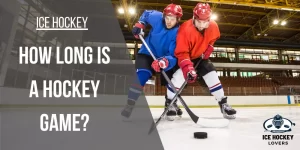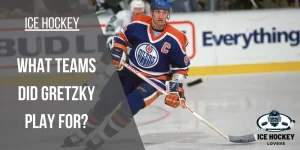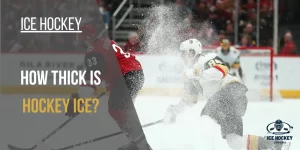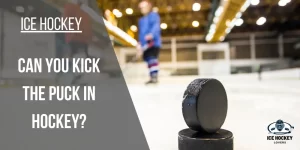Hockey Timeouts: How many Timeouts in Hockey?

You have seen many timeouts in other sports like football, baseball, etc. Coaches or teams call several timeouts, but you may see rare timeouts in ice hockey. Here, the question is raised normally, how many timeouts can take in a game?
How many timeouts in hockey? Any team can take a timeout once in each game, and any player can call for a timeout. A timeout gives a team a 30 seconds stoppage during the gameplay. These calls can be made anytime but must be called one after the other. Thus, after using one timeout, a team cannot take another until the next game.
But the question arises here: What is the right moment or a perfect time to take a timeout? Let’s try to find it out.
Table of Contents
When can a team take a timeout?
Any team player can call a timeout when there is a play stoppage; just like in other sports, any player can call a timeout a strategic move during the game. But hockey players cannot call a timeout while the game is on. And when there is a timeout call, all team members, including the goaltender, come to the bench to discuss strategic moves and rest.
Usually, a hockey timeout lasts about 1 minute, but in an NHL game, it lasts 30 seconds.
Hockey Timeout – when not permitted?
- When one team has called the timeout at a stoppage of the game, then another timeout cannot be called out. This means that only one timeout is allowed at a time, and the other has to choose another time for their timeout call.
- When the referee has given instructions to both player and goalie before the attempt of a penalty shot, so, the ‘icing’ of the penalty shooter is not permitted.
- And when the commercial timeout, generally known as TV timeout, is called, hockey timeout is not allowed at that time but only at the normal game stoppage.
- Also, when a ‘faceoff’ violation occurs, no timeout is permitted as it ruins the normal game flow.
Remember that goalies or players are not permitted to use pucks for the warmup in the timeout phase.
Hockey Timeout – When can a team call during the gameplay?
Timeout in hockey is necessary since teams can use it only once in a game. So, coaches and captains use it wisely and save it for a possible time. Mostly, coaches save it till the end of the game and then call it in the remaining last 2 minutes of the game to score the final goal to tie the game or to help their player. When the opponents win the game’s momentum, a team calls a timeout to make a gap in others’ momentum. Here are a few situations when a coach needs to use a timeout.
- After Icing of Puck: A team often gets tired and under pressure, so they try to ice the puck to cause a faceoff. And the opposing team takes it as an opportunity to place their top-tier players in front of an exhausted defensive group. At that time, coaches call for a timeout to give rest to their defensive players to avoid being outmatched. It happens when a team is up at 2-1 in the 3rd period of the game and doing their best to cover the leads.
- After High Momentum Swing: Hockey is a fast and furious game that needs high momentum and can suddenly swing to another team. Suppose when a team has a 2-0 lead, and another team ties it with two quick goals. So to this point coach will take a timeout to stop the momentum from shifting from his team to the opposing team, which becomes highly mobilizing this time. It also happens at the beginning of the game when a team scores 2-3 goals shortly after the game start, so the coach calls for a timeout to rest players and reset their stamina for the coming game before they get too tired and are left with no come back to the game.
- To Give Tired Players Rest: It occurs a few times in a game when a player has been awarded a penalty shot and is tired after taking a long shift. So, the team coach wants to call a timeout so that a player can rest and perform in this golden chance because 33% of the game can make from this penalty shot.
- Try To Score A Goal: At the end of the play, when the game is at its peak, players try their best to tie the game by scoring a goal or providing cover to their leads. This is why most coaches and captains save their timeouts till the end of the game. To use it in this scenario either to defend the game or to score a goal because a timeout call will break the flow of opposing team scenarios or give their team a chance to defend well in the last few minutes of the game.
- To Challenge A Goalie Interference: When a team challenges a potential goal scored, thinking that it was with the interference of a goalie. To do this, they need to use their timeout. Because on review, if the officials counted that goal, the challenging team will have to lose their timeout, and if they are right in using goaltender interference of another team, then they can sue their timeout. The NHL official made this rule so that teams can challenge not every goal and have to think twice before challenging.
Television Timeouts
You probably know that hockey makes money through television telecasts with advertisements and commercials. Henceforth, hockey broadcasts have taken time for a commercial show called TV timeouts.
Television timeouts usually occur three times per period for about 2 minutes after period points 6, 10, and 14. However, no TV timeout is allowed during power play or at the time of icing when the game has stopped. But the exciting thing is that you will see a commercial of 15 30 seconds instead of the actual TV timeout standard time of 2 minutes.
Frequently Asked Questions
Is there a timeout loss to a team that already lose an offside challenge?
Before the 2017 NHL season, the NHL used to have a rule: when a team’s offside goal review challenge has lost, they lose timeout too. But after 2017 NHL switched this case with a 2-minute penalty that a team takes when they lose their goal-based review challenge than losing their timeout chance.
Do NHL and international hockey timeouts differ?
NHL and international hockey have a few differences based on the IIHF rules. A team can use a 30 seconds timeout when play is stopped. But there are no TV timeouts at IIHF competitions. That’s why the Olympic hockey game lasts 2 hours while the NHL game takes two and a half hours to end.
Are hockey games’ timeouts always 30 seconds long?
Professional hockey or the NHL timeouts are always 30 seconds long; each team can use it only once.
However, college hockey timeouts last for one minute. In hockey, timeouts are less crucial than other sports, as other sports keep timeouts short to keep the gameplay.
Conclusion
Thus, a timeout must be used wisely, and captains and coaches should determine or wait for the right moment to use it to benefit from it because a team’s timeout becomes the opponent’s timeout, too, and vice versa. So there is a chance that your timeout will reverse against you instead of the opposing team. Therefore, the whole game scenario should be put before taking a timeout, and you have an advantage.
Related Posts:

Who is Austin Taylor?
Meet Austin Taylor, your go-to source for everything ice hockey! With a passion for the sport that’s as deep as the ice itself, Austin Taylor brings you concise, expert insights and nitty-gritty details on all things hockey. From gear reviews to strategy breakdowns, Austin Taylor is your trusted guide to navigating the exhilarating world of ice hockey. Get ready to lace up your skates and dive into the game with Austin Taylor as your ultimate companion.





